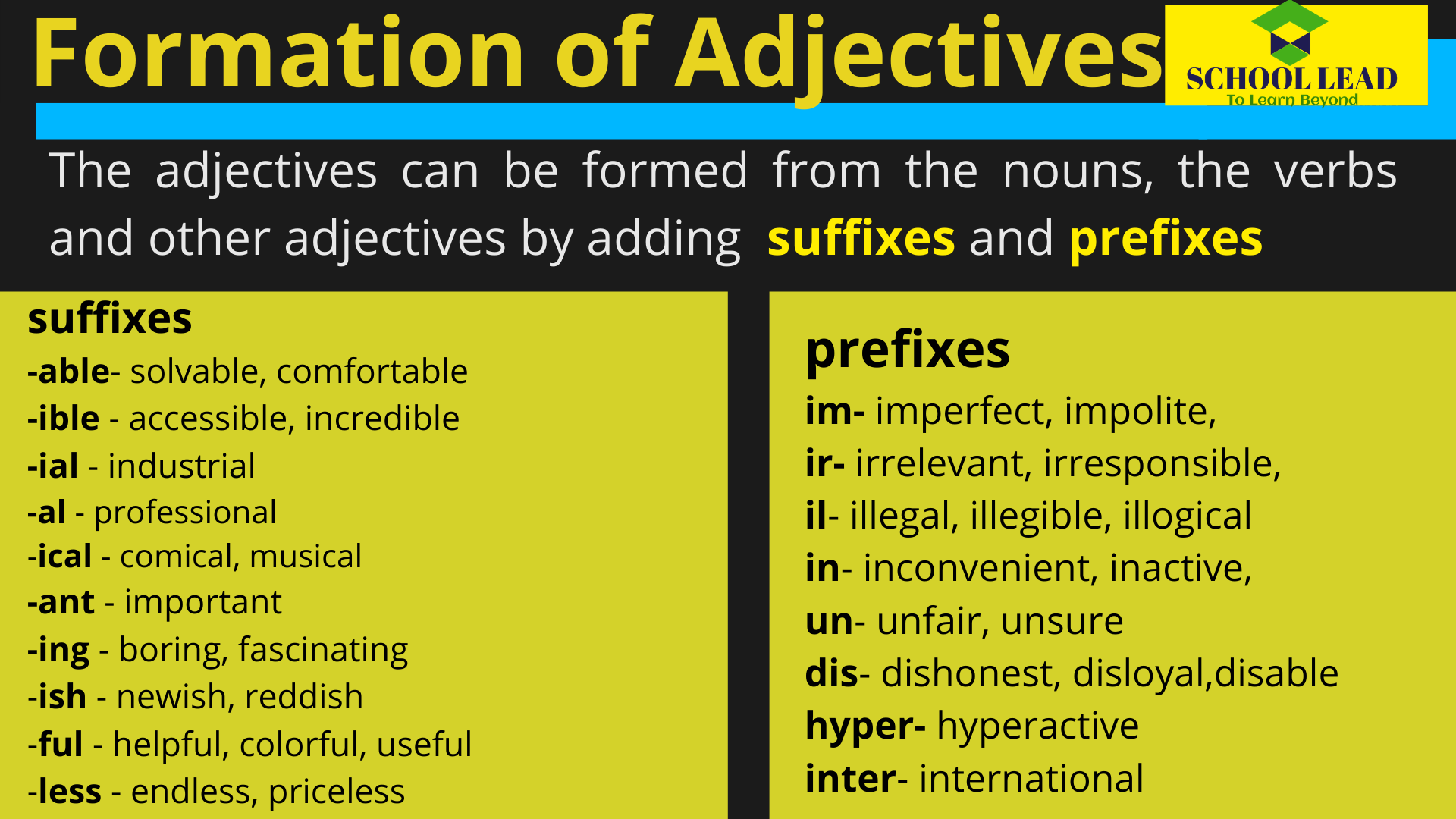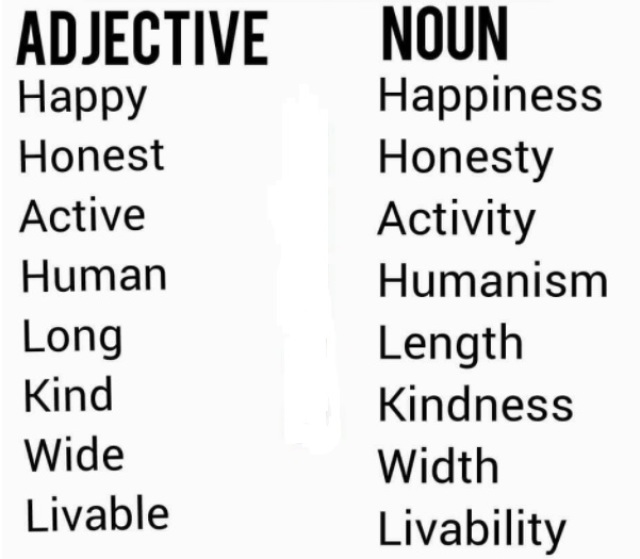Antwort How do you form adjectives? Weitere Antworten – How do you form an adjective
We can form adjectives from nouns by adding suffixes to a noun. The Adjectives that are formed by adding -y or -al or -ial as a suffix are given below in the table. If the noun has an 'e' in the ending, it is removed and -y or -al or -ial is added as a suffix to the noun to form an adjective.In German (just as in English), the past participles of verbs (with the "-ed" ending in English) can be used as adjectives, known as "participial adjectives." Add an adjective ending when appropriate. Even a verb's present participle can be used as an adjective.An adjective is a word that modifies or describes a noun or pronoun. Adjectives can be used to describe the qualities of someone or something independently or in comparison to something else. Examples: Adjectives in a sentence I like old houses. The boy is tall and skinny. Jane is smarter than her brother.
What is the rule when creating adjectives : There is no general rule for making adjectives. We know they are adjectives usually by what they do (their function) in a sentence.
What are the three forms of adjectives
The three degrees of adjectives are positive, comparative and superlative. The comparative and superlative degrees are used to compare between two or more subjects or objects. … The superlative adjective is also used to qualify a person or an object as the best among all its counterparts.
How do you form adjectives and adverbs : Adjectives and adverbs are usually based on the same word. Adverbs often have the form of an adjective + -ly. He was calm when I told him. He behaved calmly.
German adjectives come before nouns and are declined; their ending changes according to the case of the sentence and the gender and number of the noun they're describing. When used before a noun, they are called attributive adjectives (attributives Adjektiv). Examples: Auf dem Marktplatz steht ein verrückter Clown.
In German, there is no rule for a fixed order of adjectives depending of a class of attributes, like there is in English. You can use either order, but there are some more things to say about it: There is a hierarchy depending how closely an adjective describes something. This too is not set in stone.
How to change adverb into adjective
Number two if an adjective ends in y replace the y with i. And add suffix l y to make an adverb yet the adjective letter wise is a map.Adjectives are usually placed before the nouns they describe, as in the examples, tall man and easy assignment, above. Adjectives may also follow the noun they describe. Like nouns, adjectives are often recognizable by their suffixes. Endings such as -ous -ful -ish -able usually designate adjectives.The different types of adjectives are:
- Possessive Adjectives.
- Interrogative Adjectives.
- Demonstrative Adjectives.
- Compound Adjectives.
Adverbs are often formed by adding the letters “-ly” to adjectives. This makes it very easy to identify adverbs in sentences. There are many exceptions to this rule; everywhere, nowhere, and upstairs are a few examples. An adverb can be used to modify an adjective and intensify the meaning it conveys.
How do adjectives work in German : While an adjective in English stays the same no matter the plurality or role of the noun, German adjectives need to be adjusted with different endings to indicate the gender, plurality, and case of the noun.
How do you accord adjectives in German : German adjectives, like English ones, usually go in front of the noun they modify: "der gute Mann" (the good man), "das große Haus" (the big house/building), "die schöne Dame" (the pretty lady). Unlike English adjectives, a German adjective in front of a noun has to have an ending (-e in the examples above).
What is the German word order rule
German is an SVO (subject, verb, object) language. It is also a V2 (the verb in the second position) language. In subordinate clauses, basic German word order is SOV (subject, object, verb).
Here's an easy way to know where to put an adjective in a sentence. It will usually appear just before the noun it's describing. By contrast, an adverb will usually appear right after the verb it's describing. Unfortunately, placement doesn't always tell you if something is an adverb or adjective.* An adjectival phrase begins with a preposition. Examples of prepositions include with, of, in, on, from, out, near, and through. Most adjectival phrases appear after the noun they're describing.
What are the 13 types of adjectives : Adjectives can be broken into different categories including comparative, superlative, predicate, compound, possessive, demonstrative, proper, participial, limiting, descriptive, interrogative, attributive, and distributive adjectives.








